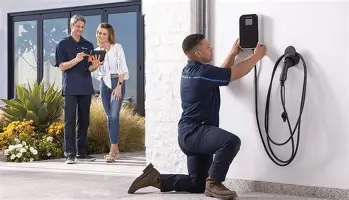We rely on our air conditioners to keep us cool through blistering summers and stuffy nights. But if your air conditioning system is more than 10 years old, it might be doing more harm than good—to your wallet, your comfort, and even the environment.
You may not see the extra dollars dripping out with every cycle your AC runs, but over time, older units can rack up significant hidden costs. From skyrocketing energy bills to unexpected repair expenses, an outdated system can quietly drain your bank account year after year.
So, is your old AC system really costing you more than you think? Let’s break it down—and more importantly, find out how upgrading could potentially save you thousands.
1. The Real Cost of an Aging AC Unit
Older air conditioning units are typically far less efficient than modern systems. Most older ACs operate at a SEER (Seasonal Energy Efficiency Ratio) rating of 10 or less. In contrast, today’s systems offer SEER ratings of 15, 20, or even higher. The higher the SEER rating, the more efficient the unit, and the less energy it consumes.
Even if your old AC seems to be functioning properly, it likely requires more energy to produce the same amount of cooling as a modern unit. Over time, wear and tear degrade performance, requiring the system to work harder—leading to inflated power bills.
💡 Stat Alert: According to the U.S. Department of Energy, replacing a 10 SEER unit with a new 16 SEER model can reduce your cooling costs by 30% to 40%.
Source: energy.gov
That’s a massive saving, especially if your home relies heavily on AC during the summer months.
2. Repair Costs Add Up Quickly
Another hidden cost of aging AC systems is the increasing frequency and price of repairs. As parts become obsolete or harder to source, you’ll often find yourself spending more and waiting longer to get the system up and running after a breakdown.
And let’s be honest—ACs rarely break down during mild weather. They give up on the hottest days of the year when they’re pushed to their limits, forcing you to scramble for emergency service, which comes at a premium price.
An older unit may have already gone through one or more refrigerant recharges. If your system still uses R-22 refrigerant (also known as Freon), you’re paying a premium. R-22 has been phased out due to its environmental impact, making it very expensive—if you can even find it.
Upgrading to a new AC not only removes the hassle of constant repairs but also eliminates dependency on outdated, expensive refrigerants. It’s a future-proof move.
3. Higher Energy Bills—Month After Month
Let’s crunch some rough numbers. Suppose your monthly electricity bill during summer is around $300, and cooling makes up 40% of that (which is typical in warm climates). That’s $120 for cooling. If upgrading cuts that by 30%, that’s a $36 monthly saving—or $432 per year.
Over a 10-year span, that’s over $4,000 in savings, not including any money saved on repairs, reduced emergency service calls, and lower maintenance costs.
When you look at it from this angle, upgrading your system isn’t an expense—it’s an investment that pays for itself over time.
4. Increased Home Value and Comfort
Installing a new air conditioning system doesn’t just lower bills. It increases the comfort and resale value of your home. Prospective buyers see a new AC as a sign of a well-maintained property. It’s also one less thing they’ll have to worry about replacing—making your home more appealing and possibly boosting its selling price.
But even if you’re not planning to sell soon, the comfort factor is huge. New AC systems offer better climate control, improved airflow, quieter operation, and smarter technology. Many come with programmable thermostats or integrate seamlessly with smart home systems, giving you total control over your home’s climate from your phone.
5. Environmental Impact
Outdated ACs aren’t just expensive—they’re also bad for the planet. Older systems tend to use more electricity, increasing the demand on the power grid and contributing to carbon emissions. Plus, as mentioned earlier, if your AC uses R-22 refrigerant, it releases chemicals that deplete the ozone layer.
Modern systems are built with eco-friendliness in mind. They use greener refrigerants like R-410A or newer variants and are designed to consume less energy without compromising performance.
🌍 Stat Alert: The International Energy Agency (IEA) estimates that improving air conditioning energy efficiency could cut global emissions by 460 million metric tons of CO₂ by 2050—the equivalent of removing 100 million cars from the road.
Source: iea.org
By upgrading, you’re not just helping your own wallet—you’re contributing to a healthier planet.
6. Government Incentives and Rebates
Still not convinced? There’s more good news.
Depending on your location, government agencies and utility companies often offer rebates or tax credits for upgrading to energy-efficient HVAC systems. These incentives can reduce the upfront cost of a new unit by hundreds or even thousands of dollars.
Combine those savings with long-term utility bill reductions, and it’s clear that the sooner you upgrade, the more you’ll save.
7. Smart Technology Makes a Big Difference
Today’s air conditioners do a lot more than blow cold air. Many are equipped with Wi-Fi capabilities, smart thermostats, and zoned cooling options that let you control temperature room-by-room.
This not only improves comfort but significantly boosts efficiency. Why cool the whole house when you’re only using the living room? Smart zoning allows you to reduce energy waste and fine-tune your usage for maximum savings.
You also get performance monitoring features that alert you to potential issues before they become expensive problems. Think of it like preventive care for your AC.
8. Signs It’s Time to Replace Your AC
If you’re unsure whether your old AC is really costing you more than it should, here are some red flags:
- Your unit is more than 10–15 years old
- Frequent repairs or breakdowns
- Your energy bills are rising year over year
- Inconsistent temperatures or poor airflow
- Strange noises or foul odors
- Your home never feels quite cool enough
If one or more of these sounds familiar, it’s worth getting a professional evaluation. Many HVAC companies offer free inspections or consultations to help you decide whether repair or replacement is the smarter choice.
9. The Bottom Line: Upgrade Now, Save Later
At first glance, upgrading your AC system might seem like a major expense. But when you dig into the numbers, it’s clear that sticking with an old, inefficient system can quietly drain your finances year after year.
Here’s a quick recap of what you could be saving by upgrading your AC:
- Up to 40% lower cooling costs
- Fewer repairs and maintenance expenses
- Reduced environmental impact
- Increased home comfort and resale value
- Access to rebates and energy incentives
- Smart features for greater control and efficiency
It all adds up.
So if your AC is clunking, leaking, or just not cutting it anymore, don’t wait until it gives out in the middle of a heatwave. Take action now—and start saving sooner rather than later.
Final Thoughts
Every season you wait is another season your old AC is draining your bank account. And with energy prices always creeping up, the sooner you upgrade, the more you stand to gain.
Think of your new air conditioning system not as an expense, but as a long-term investment—one that pays off in energy savings, comfort, home value, and peace of mind.
Sometimes the smartest financial decisions are the ones hiding in plain sight. And in this case, it’s humming away in the corner, cooling your living room—while quietly costing you a fortune.



